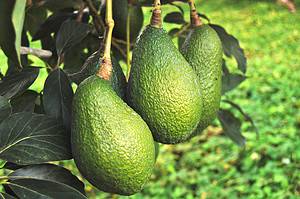With around 40 unique species of snakes slithering around Arkansas, the state is one of the most snake-infested areas in the entire country. But what sorts of snakes should you be looking out for in its waters if you live in the area or plan on visiting? Read on to learn all about three of Arkansas’ most snake-infested lakes, the many types of water snakes that live in the Natural State, and some interesting facts about them.
Water Snakes Found in Arkansas Lakes
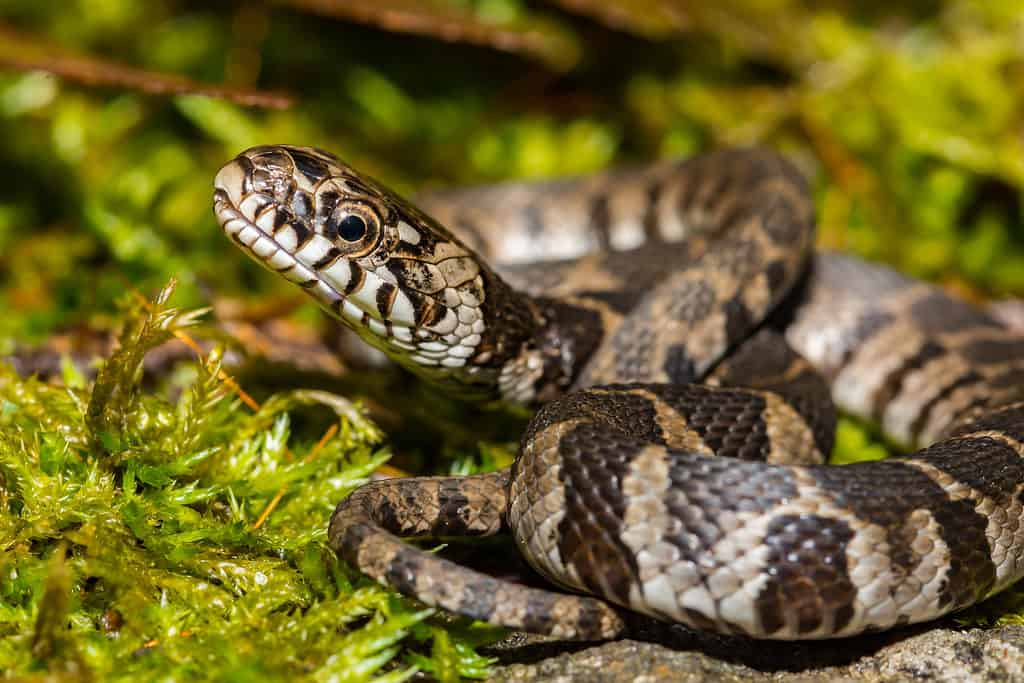
The common water snake is one of Arkansas’ most abundant water snake species.
©Jay Ondreicka/Shutterstock.com
According to the Arkansas Game and Fish Commission, Arkansas has five total species of native water snakes. Taxonomically, a water snake is any species that fall under the genus Nerodia. Fortunately, all Nerodia species are non-venomous and largely harmless to humans. As they are all highly aquatic, they mainly feed on fish and aquatic invertebrates.
The five species of water snakes in Arkansas are the following:
- Northern/common water snake, Nerodia sipedon
- Plainbelly water snake, Nerodia erythrogaster
- Mississippi green water snake, Nerodia cyclopion
- Diamondback water snake, Nerodia rhombifer
- Banded water snake, Nerodia fasciata
Several other native species that are not true water snakes can still be found in and near water in Arkansas, including:
- Common garter snake, Thamnophis sirtalis
- Northern cottonmouth, Agkistrodon piscivorus (venomous)
- Western ribbon snake, Thamnophis proximus
- Crayfish snake, Liodytes rigida
- Graham’s crayfish snake, Regina grahamii
- Queen snake, Regina septemvittata
- Western rat snake, Pantherophis obsoletus
- Rough green snake, Opheodrys aestivus
- Eastern racer snake, Coluber constrictor
3 Most Snake-Infested Lakes in Arkansas
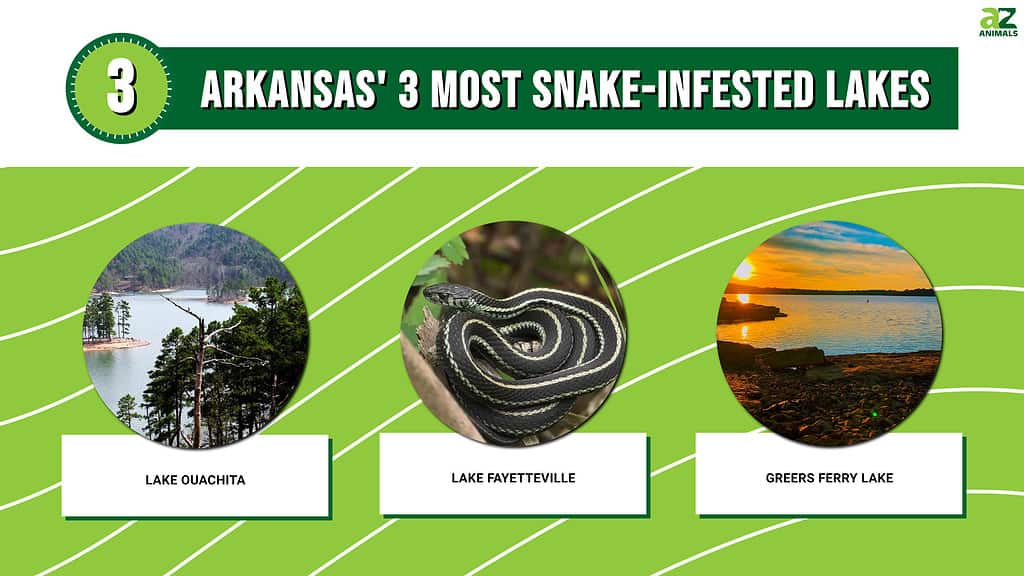
There are more than 2,300 named lakes and reservoirs in Arkansas, and most of them are home to at least a few types of true water snakes and water-dwelling snakes. However, only a select handful have become known for their well-documented snake encounters! Below, we’ll explore three of Arkansas’ most snake-infested lakes and the types of snakes Arkansans have encountered while exploring, swimming, or fishing.
1. Lake Ouachita
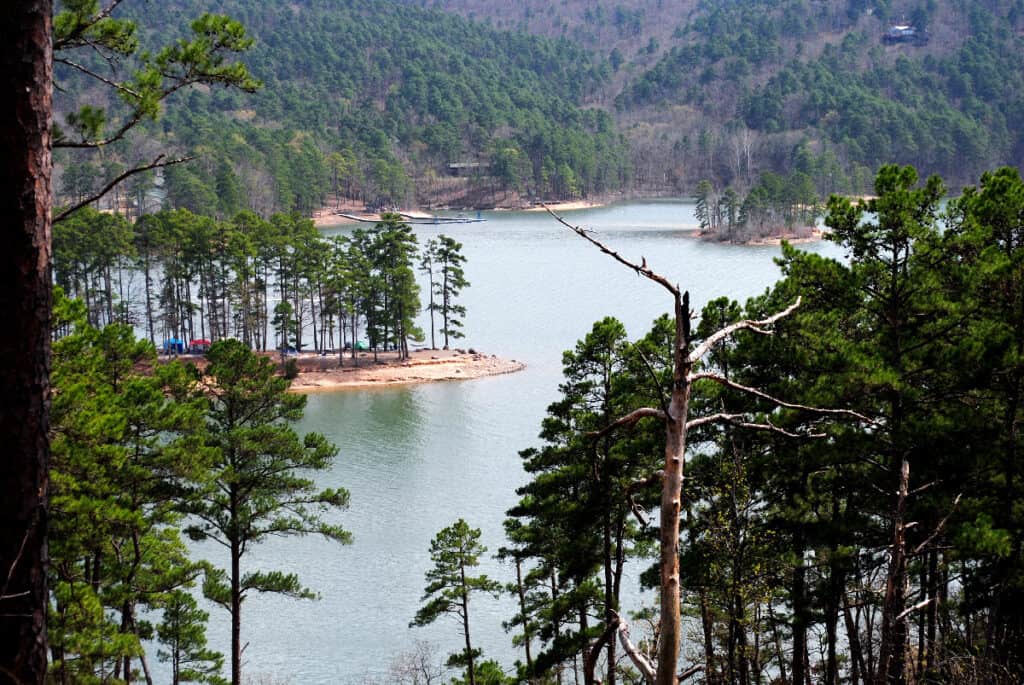
It’s fairly common for Arkansans to encounter snakes at Lake Ouachita, Arkansas’ largest lake.
©iStock.com/Kathy Byrd
As Arkansas’ largest and deepest lake, Lake Ouachita covers two counties, Garland and Montgomery, in the central region of the state. It has around 700 miles of shoreline and covers more than 65,000 acres of water! It also is home to a wide variety of animal species and is a prime fishing spot for anglers seeking game fish like largemouth bass and catfish. However, this also means it’s a buffet for water snakes looking for a meal.
Since its development in 1952, Lake Ouachita has had more than a few documented snake encounters. Lake Ouachita State Park has even held educational events and seminars dedicated to informing visitors about the lake’s many different species of aquatic and semi-aquatic serpents. Fortunately, most snakes you might come across while visiting Arkansas’ largest lake are non-venomous and harmless to humans.
But as far as venomous snakes go, cottonmouth sightings and rattlesnake encounters are fairly common here. If you plan on hiking in the area on one of Ouachita State Park’s many scenic trails, you’ll also want to keep an eye out for copperheads and pygmy rattlesnakes. Mostly, though, its true water snakes are quite fearful of humans, with the northern and plain belly water snakes being among the most abundant in the area.
2. Lake Fayetteville
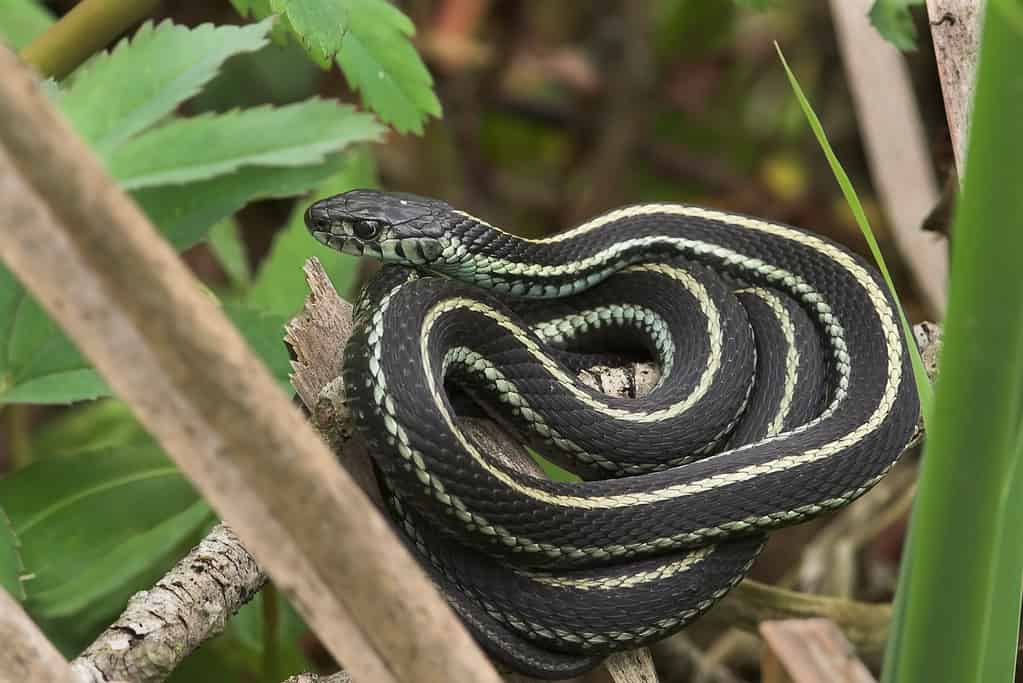
Though they are not true water snakes, garter snakes are highly aquatic and very common in and around Lake Fayetteville.
©iStock.com/rkhalil
Nestled in Arkansas’ northwestern corner, Lake Fayetteville was created in 1949 and covers around 450 acres of land and almost 200 acres of water. It’s also known to locals as a hotbed for a variety of snake species, including many aquatic and semi-aquatic snakes like the northern water snake and the banded water snake. Snake encounters, in general, are quite common here, with venomous species like the cottonmouth being a common sighting as well.
Similar to Lake Ouachita, Lake Fayetteville is a top fishing destination in the area. It boasts a healthy population of bass, carp, bluegill, catfish, and more, as well as a dedicated marina and fishing piers for anglers to utilize. This is, however, also part of the reason why water snakes enjoy living there so much–smaller species of fish like the bluegill are common prey for them.
In addition to being the perfect home for various aquatic and semi-aquatic serpents, Lake Fayetteville’s surrounding park is a hotspot for more terrestrial species like rattlesnakes. If you’re planning on hiking along the Lake Fayetteville Trail, it’s also important to be especially mindful of species like diamondback and pygmy rattlesnakes! While they are not aggressive towards humans, they will strike if handled, provoked, or perhaps accidentally stepped on by an unassuming hiker.
3. Greers Ferry Lake
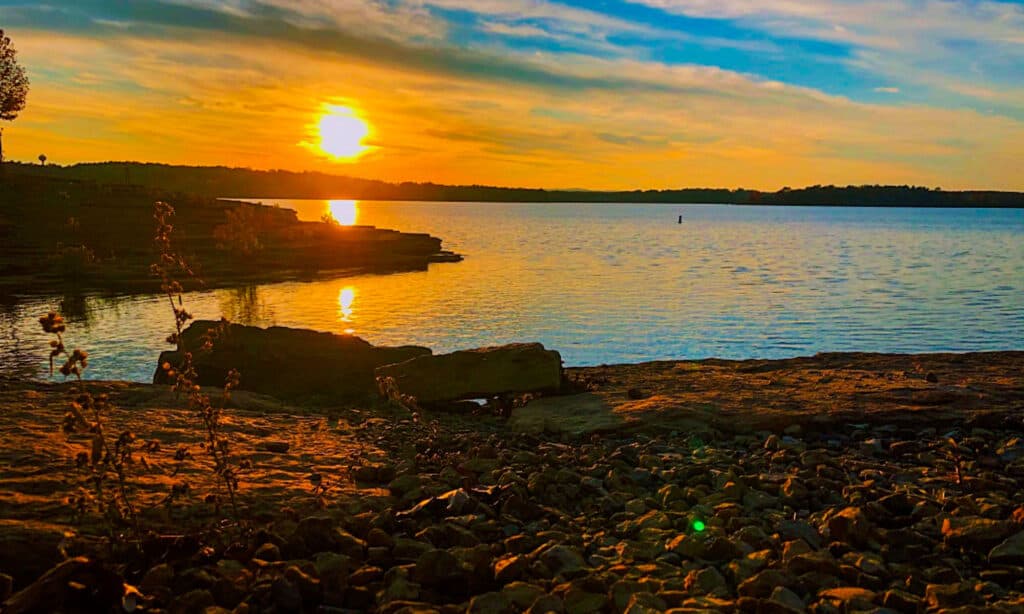
Greers Ferry Lake is Arkansas’ fourth-largest lake.
©iStock.com/Lauren Faurie
As Arkansas’ fourth-largest lake, Greers Ferry Lake is a reservoir developed in 1962. Notably, it’s made up of two lakes connected by a narrow gorge (appropriately named “The Narrows”). In its entirety, it covers just over 40,000 acres and has a 340-mile shoreline. Located in northern Arkansas, it rests around 60 miles north of Little Rock, the state capital.
Since its inception in 1962, Greers Ferry Lake has become a popular tourist and getaway destination for native Arkansans and visitors alike, thanks to its many parks and campsites that boast activities like fishing, boating, hiking, and water skiing.
However, visitors should also be mindful of both venomous and non-venomous snakes in the area. Rough green snakes are common sightings, though, despite their vibrant coloration, they are non-venomous and rather fearful of humans. Most of the area’s water snakes, like the diamondback water snake, are also harmless and non-venomous, though many people often confuse them with the venomous cottonmouth and diamondback rattlesnake species.
Summary of the Most Snake-Infested Lakes in Arkansas
| Lake | Types of Snakes | |
|---|---|---|
| 1 | Lake Ouachita | Cottonmouths, copperheads, pygmy rattlesnakes, northern water snakes, plain belly water snakes |
| 2 | Lake Fayetteville | Northern water snakes, banded water snakes, cottonmouths, diamondback rattlesnakes, pygmy rattlesnakes |
| 3 | Greers Ferry Lake | Rough green snakes, diamondback water snakes, northern water snakes, cottonmouths, rattlesnakes |
The photo featured at the top of this post is © iStock.com/Kathy Byrd
Thank you for reading! Have some feedback for us? Contact the AZ Animals editorial team.




